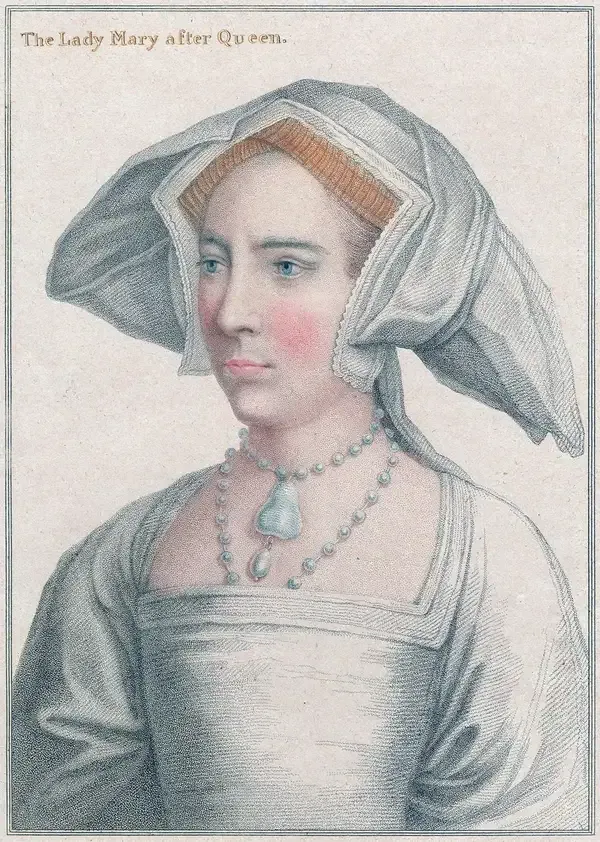- Home >
- Pop
- > Fashion Trends
Was Bloody Mary a Real Person?
"Was Bloody Mary a Real Person?" explores the historical figure of Mary I of England, delving into her reign and the reasons behind her infamous nickname. Meanwhile, "The Big Apple" examines the origins of New York City's nickname, tracing it back to the jazz scene and horse racing. Additionally, the piece highlights the intriguing stories behind eight other famous cities and their nicknames, revealing the cultural and historical contexts that shaped these identities, enriching our understanding of urban heritage.

Understanding the Legend of Bloody Mary
The legend of ''Bloody Mary'' has fascinated and terrified people for generations. This folklore figure is often associated with a ritual where individuals summon her spirit by chanting her name in front of a mirror. But was ''Bloody Mary'' a real person? To answer this question, we must delve into the historical and cultural contexts surrounding the myth.
Historical Figures Linked to Bloody Mary
Several historical figures have been suggested as inspirations for the ''Bloody Mary'' legend. The most prominent among them is ''Mary I of England'', commonly known as ''Bloody Mary'' due to her persecution of Protestants during her reign. Below is a table highlighting some key details about her life and rule:
| Aspect | Details |
|---|---|
| Name | Mary I of England |
| Reign | 1553-1558 |
| Nickname | Bloody Mary |
| Religion | Roman Catholic |
| Notable Actions | Persecution of Protestants |
Mary I's efforts to restore Catholicism in England led to the execution of many Protestants, which earned her the infamous nickname. Her reign was marked by political and religious turmoil, and her legacy has been reinterpreted through various cultural lenses.
Other Possible Inspirations
While ''Mary I of England'' is the most commonly cited figure, other candidates have also been suggested as potential inspirations for the ''Bloody Mary'' legend. These include:
- Mary Worth: A supposed witch who was executed and is said to haunt mirrors.
- Elizabeth Báthory: A Hungarian noblewoman who was accused of murdering young girls and bathing in their blood, often dubbed the "Blood Countess."
Each of these figures embodies different aspects of the ''Bloody Mary'' legend, contributing to the complexity of the story and its enduring appeal.
The Ritual and Its Variations
The ''Bloody Mary'' ritual itself varies widely. Some versions require participants to chant her name a specific number of times, while others involve lighting candles or performing the ritual in total darkness. Here’s a quick overview of the common elements:
| Element | Description |
|---|---|
| Setting | Dimly lit room or bathroom |
| Mirror | Key focus point for the summoning |
| Chanting | Repetition of "Bloody Mary" or variations |
| Consequences | Reported sightings of a ghostly figure, feelings of dread |
The ritual is often performed by adolescents looking for a thrill, adding to the urban legend surrounding ''Bloody Mary'' and reinforcing the idea of her as a cautionary figure.
The Cultural Impact of Bloody Mary
The story of ''Bloody Mary'' has permeated various aspects of popular culture, from literature to films. It serves as a cautionary tale about the consequences of violence and the haunting nature of guilt. Here are a few notable examples:
- Literature: The legend has been adapted in various short stories and novels, often exploring themes of revenge and justice.
- Film: Movies such as "Candyman" draw inspiration from the ''Bloody Mary'' legend, intertwining horror with social commentary.
- Television: Shows like "Buffy the Vampire Slayer" have referenced the myth, showcasing its relevance in modern storytelling.
Conclusion: The Real vs. the Myth
In conclusion, while ''Bloody Mary'' may have historical roots in figures like ''Mary I of England'', the legend itself is a tapestry woven from folklore, cultural fears, and societal norms. Whether she was a real person or a mythological figure, the story of ''Bloody Mary'' continues to intrigue and terrify, making her a timeless figure in the realm of horror and folklore. The legend serves as a reminder of the power of stories and their ability to shape our understanding of history and morality.












